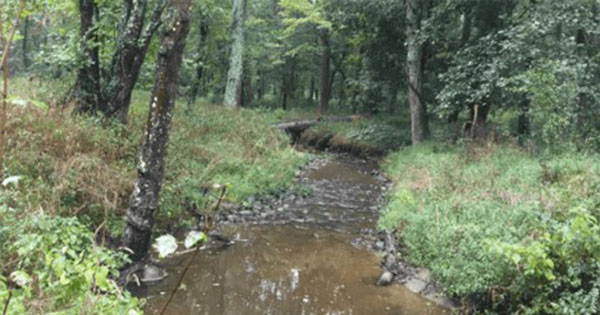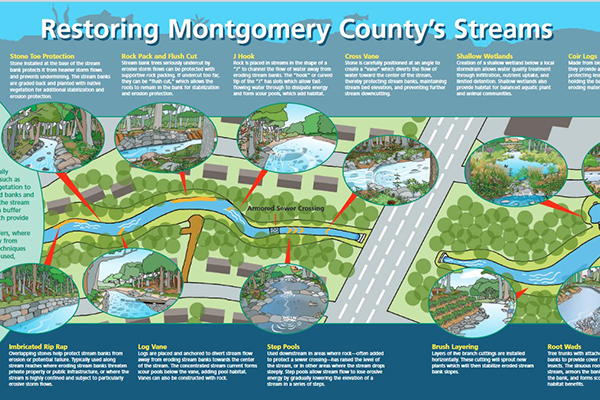Stream Restoration
- Restoration Types & Techniques
- Find a Restoration Project
- Watershed Planning
Stream Restoration

Stream restoration is complex and as a growing and evolving method can be challenging for both practitioners and the public to understand and achieve success. Overall, stream restoration is performed to improve the environmental health of a river or stream within their present environmental context in support of biodiversity, recreation, flood management and/or landscape development. It’s a difficult balance, particularly in an urban setting, but it focuses on restoring function and value, generally found in stable, natural stream systems which protects aquatic life and the health of our aquatic systems.
Erosion
.jpg)
Erosion is a natural process but as humans continue to change land use, watershed hydrology is altered. Streams are not static by nature and a “Do Nothing” strategy can result in irreversible and more costly impacts. Restoration practices have changed over time and a technique or method that works in one area may not work in another as research continues to better understand the environmental benefits, impacts and effectiveness of these techniques including floodplain reconnection, stream buffer reforestation and revegetation, which provide long-term protection.
While each project has specific goals, stream restoration is typically designed to:
- stabilize stream channels
- reduce erosion of channel beds and streambanks
- reduce sediment pollution occurring downstream
- establish healthy aquatic habitat, and
- protect essential public infrastructure and private property
It is also important to note that practitioners strive to improve and continue to learn from each project.
Stream Restoration in Montgomery County
Stream restoration is a set of techniques or methods the County uses to protect adjacent properties and public infrastructure by reducing stream bank erosion, minimizing the down-cutting of stream bed, and restoring aquatic ecosystems (natural stream system).
Restoration techniques typically use natural materials such as rock, logs, and native plants to help slow down stormwater flow and restore the natural meander of curve pattern found in stable streams. They are usually done in larger scale projects utilizing large equipment to mobilize plants and rocks.
Download Restoring Montgomery County's Stream Poster(PDF, 1.63 MB)Stream Restoration Techniques
Techniques Using Plants
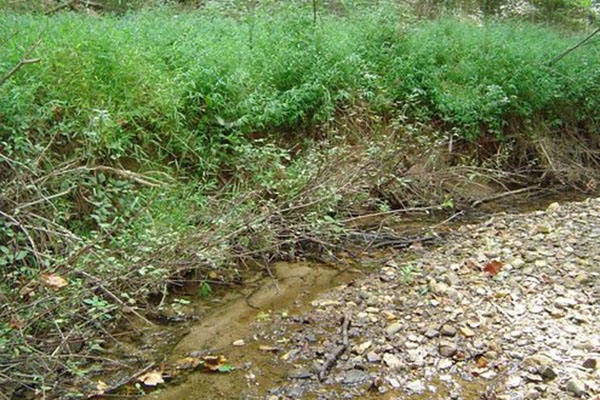 Brush Layering
Brush Layering
Layers of live branch cuttings are placed horizontally along the stream. New plants will sprout from the live branches and the roots will hold the soil down and prevent erosion.
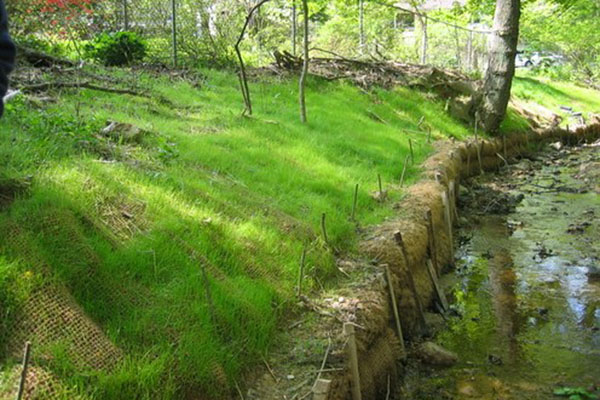 Coir Logs
Coir Logs
Heavy mesh netting made from coconut fibers, used to hold soil in place and help plants grow, reduce weeds, and retain water. They naturally breakdown over time and become part of the soil.
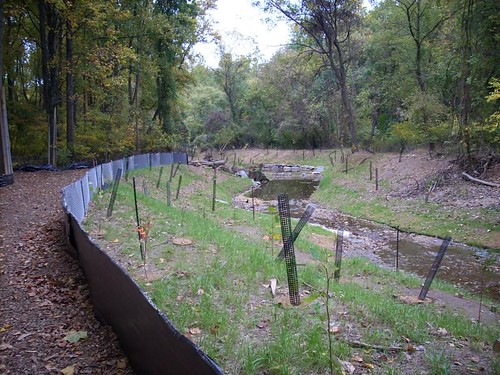 Grading and Planting
Grading and Planting
Steep stream banks are graded into a series of gently sloping steps. During large rain storms, the stream has more room for water to flow and decrease the speed of the flow. In addition, the plants and vegetation roots help stabilize the banks and hold them in place.
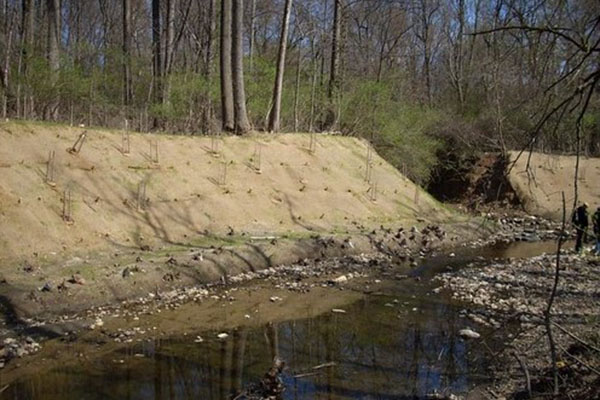 Mulch Planting
Mulch Planting
Lengths of stream bank are planted with plants to stabilize the banks and hold soil in place through the roots of the plant.
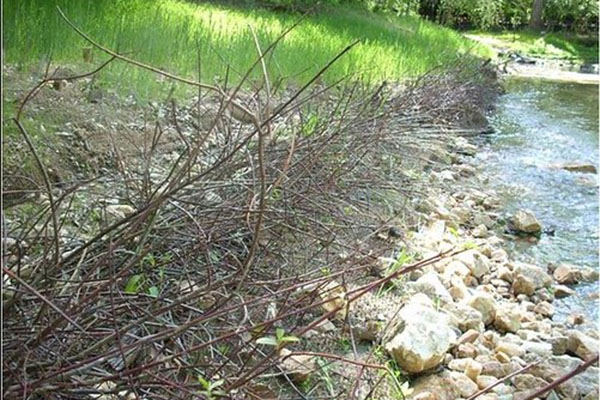 Root Wads
Root Wads
Tree stumps with attached roots are anchored in stream banks with roots facing the streams to slow down flow and provide habitat for fish, amphibians, and aquatic insects.
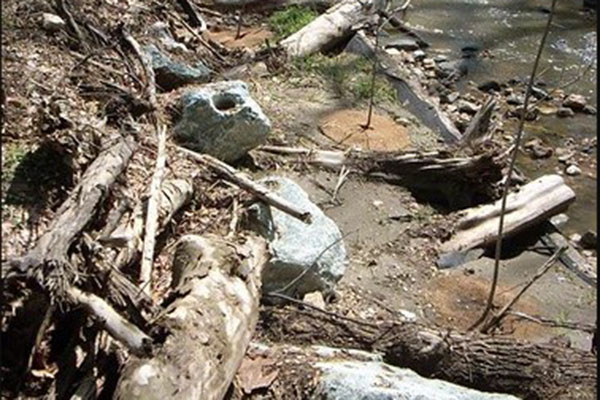 Woody Debris
Woody Debris
Woody debris includes logs and woody material, which can be used to provide spaces where fish can live and reproduce. Large tree limbs and woody materials are anchored along stream banks to reduce erosion and to buttress terraces and pools.
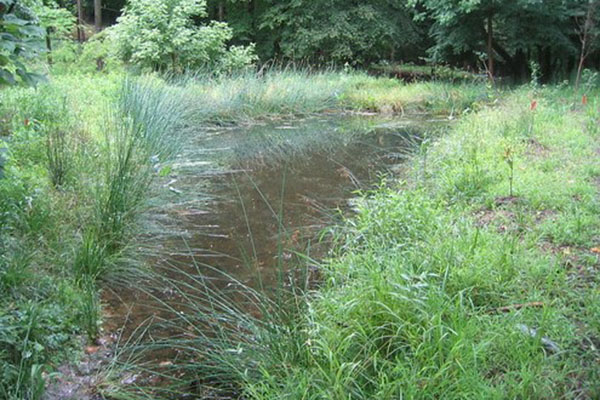 Shallow Wetlands
Shallow Wetlands
A marshland-like environment is created below a storm drain outfall to allow treatment for the stormwater before it reaches the stream. It also provides for aquatic plant and animals.
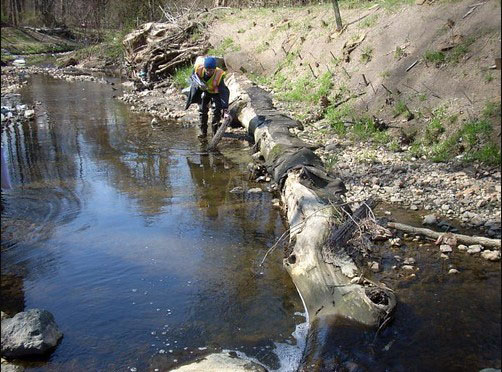 Log Vane
Log Vane
Logs are placed and anchored to direct stream flow away from eroding stream banks towards the center of the stream. The concentrated stream current forms small pools (scour pools) below the vane where aquatic creatures can live.
Techniques Using Rocks
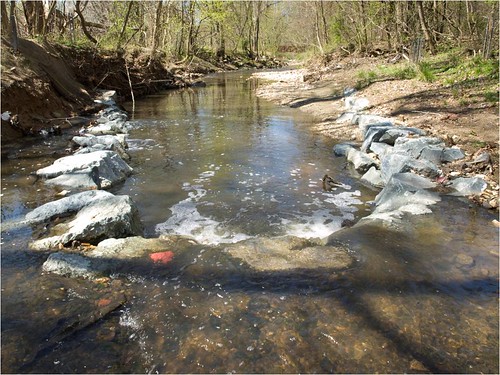 Cross Vane
Cross Vane
Stones are placed in streams in the shape of a “C” or a “V” to direct water towards the center of the stream away from the stream bank and reduce erosion.
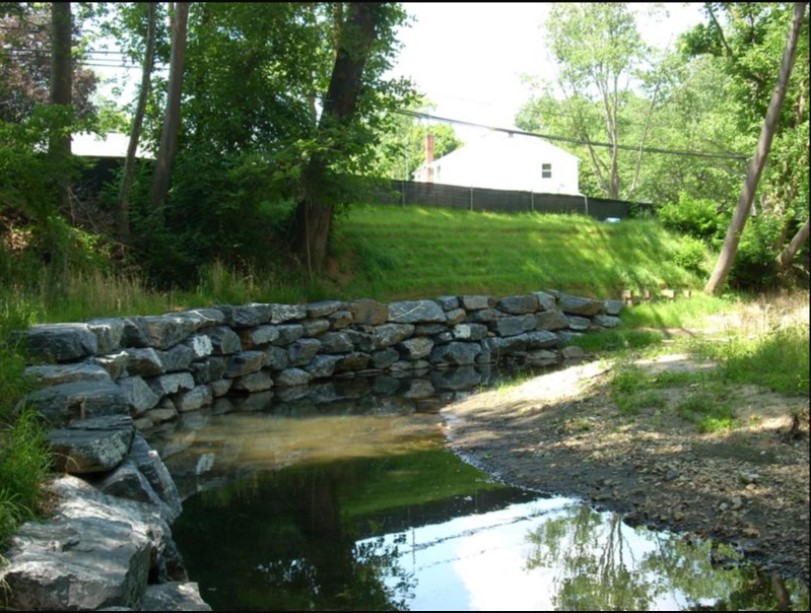 Imbricated Rip Rap
Imbricated Rip Rap
Stones are stacked together forming a wall or slope to prevent soil from being washed away into the stream during heavy rain storms. This is typically used in areas where erosion is severe or near private property.
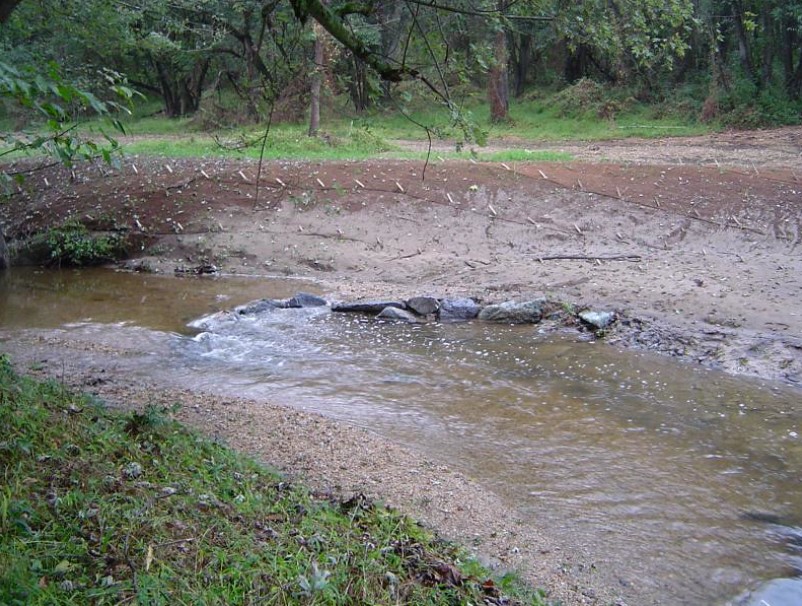 J Hook
J Hook
Rocks are placed in streams in the shape of a “J” to channel the flow of water away from eroding stream banks. The “hook” or curved tip of the “J” has slots for fast-flowing water to pass through and creates small pools (scour pools) where aquatic creatures can live.
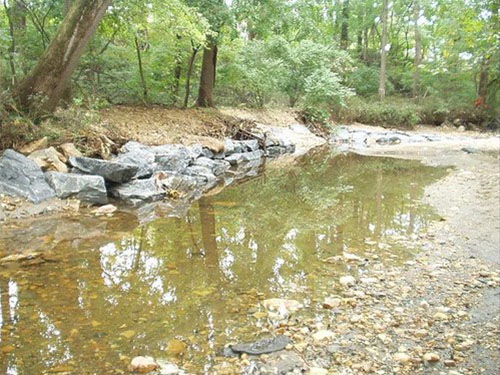 Rock Pack and Flush Cut
Rock Pack and Flush Cut
Trees along the stream bank that are damaged by runoff can be protected with supportive rock packing. If the tree is beyond recovery, it can be cut down (Flush Cut) leaving the trunk to help hold soil in place.
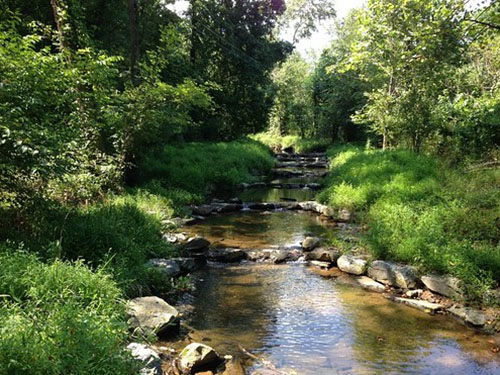 Step Pools
Step Pools
A series of pools built with rocks that mimic staircase steps to slow down stream flow. This is often used to protect utilities such as sewer crossings, etc.
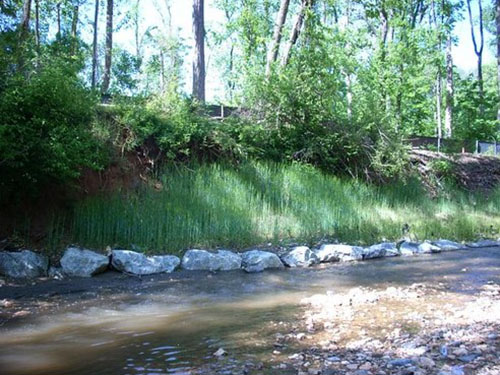 Stone Toe Protection
Stone Toe Protection
Large stones are placed at the base of the stream bank to prevent fast moving stormwater runoff from wearing away and destroying the stream bank. The stream banks can also be carved back to a gentler slope where native plants are planted to hold the soil in place.
Before & After/ Stream Restorations
See some of our before & after photos of projects DEP completed.
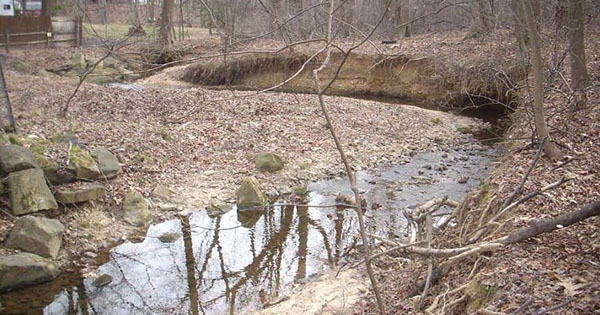
Hollywood Branch - Before
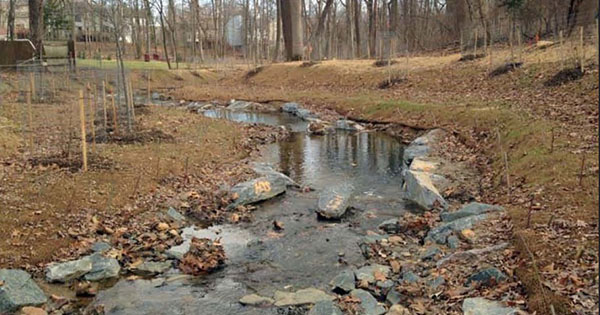
Hollywood Branch - After
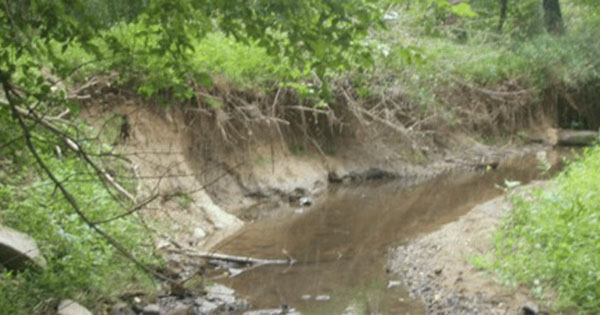
Woodlawn - Before
